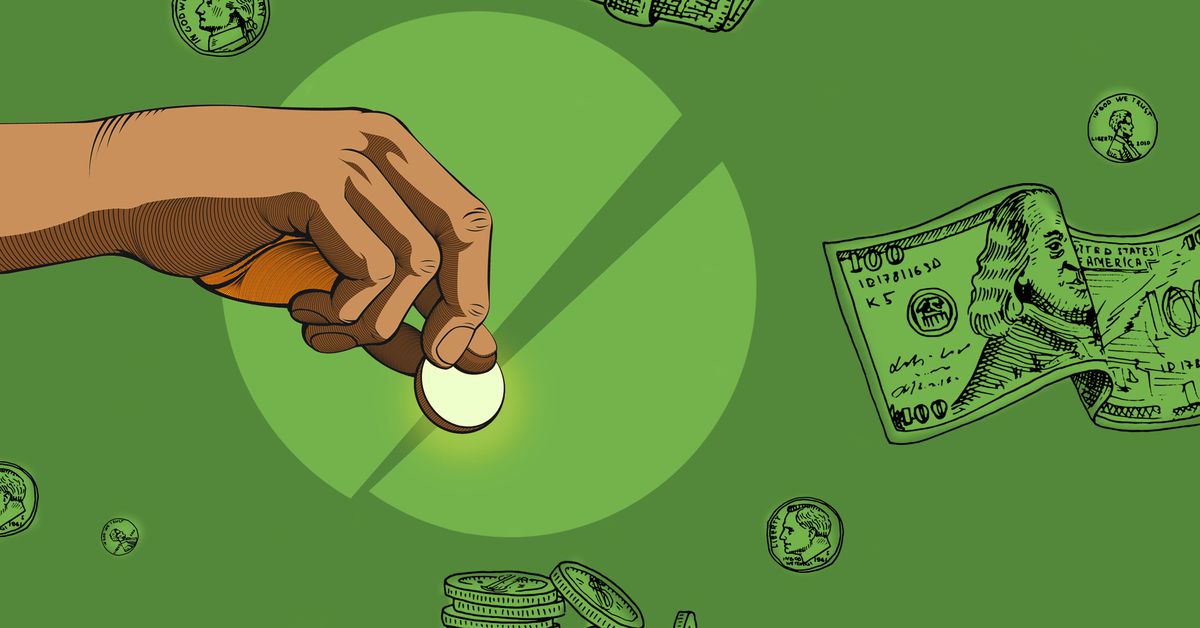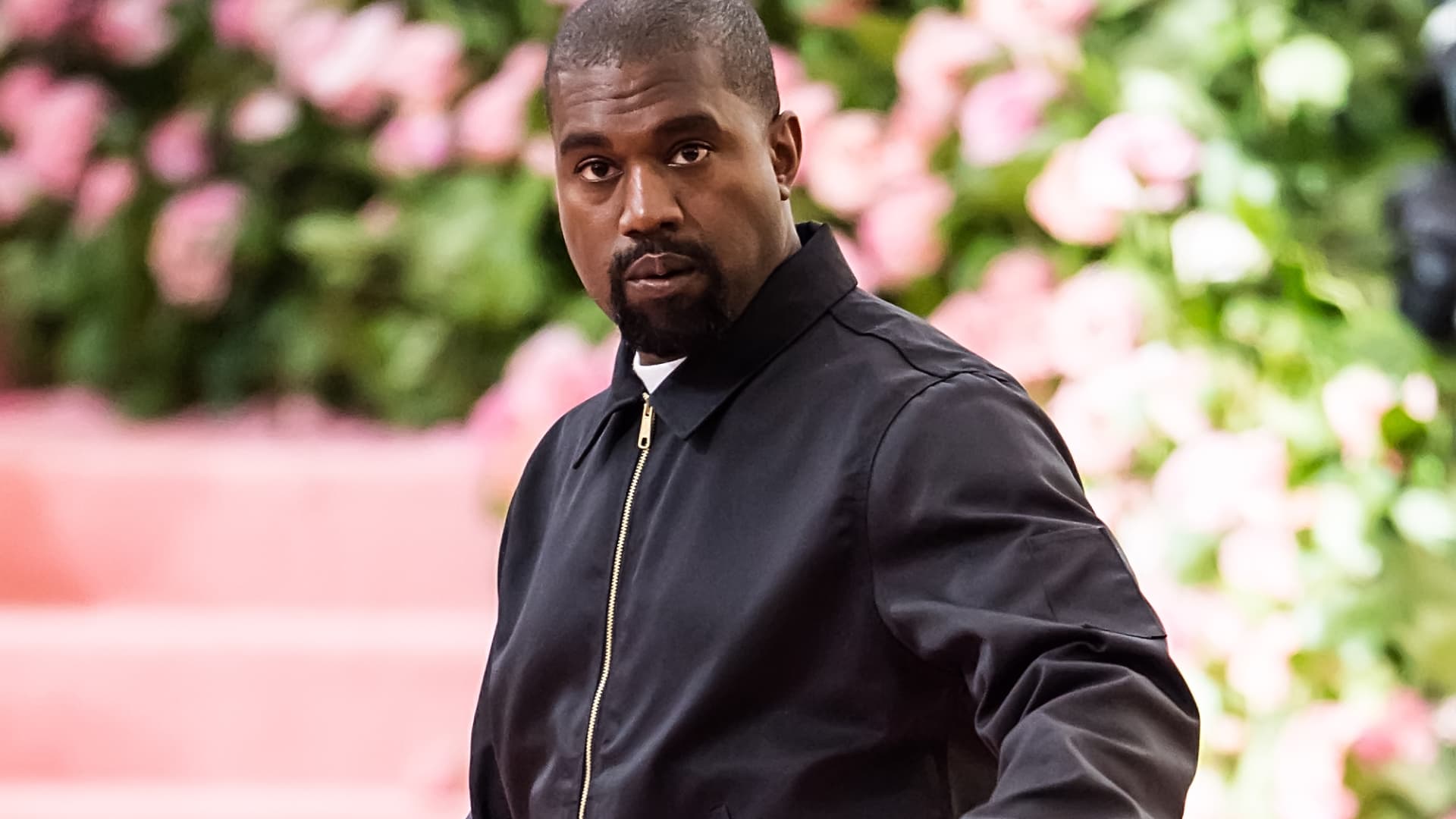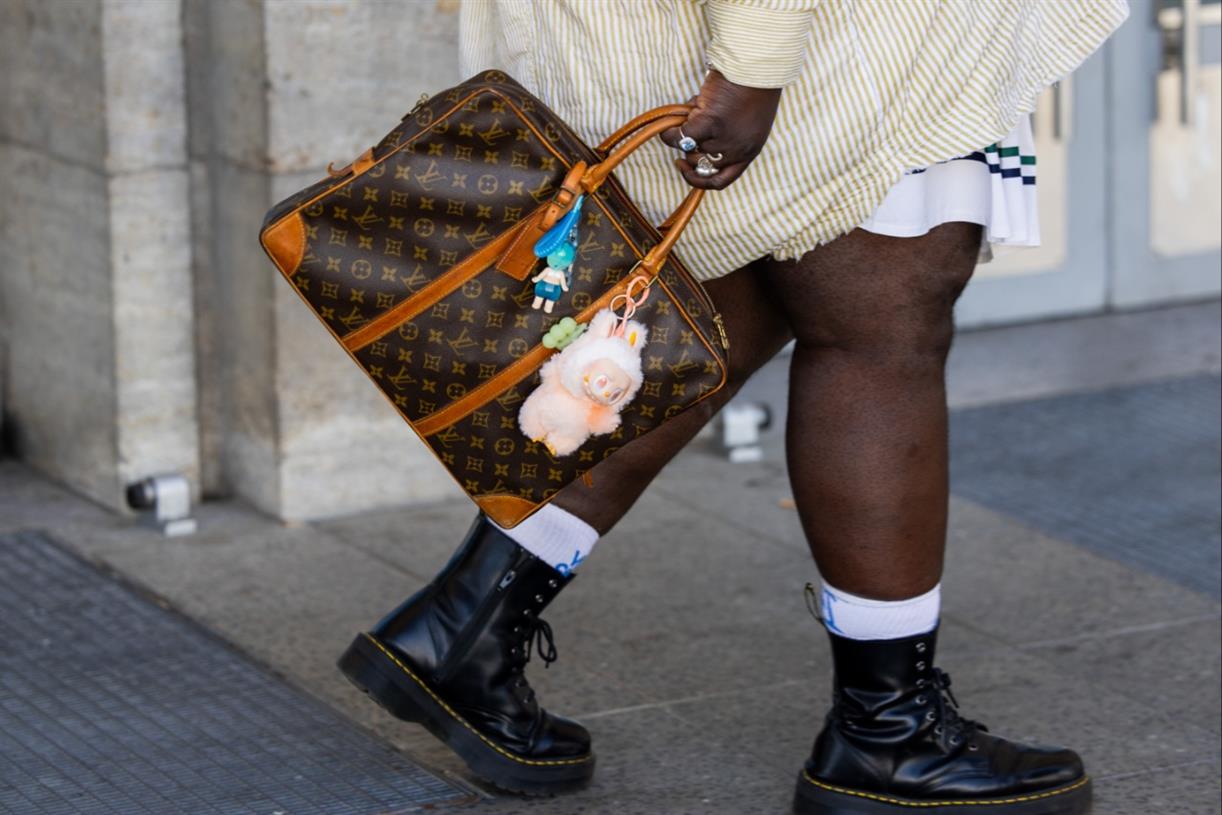Billionaires get too much credit for philanthropy
Amanda Northrop/VoxThe ultrawealthy are donating more than ever. That doesn’t mean the rest of us are giving less. Over the past two decades, fewer and fewer Americans have given to charity. In 2000, roughly two-thirds of American households gave...

Over the past two decades, fewer and fewer Americans have given to charity.
In 2000, roughly two-thirds of American households gave to a charitable organization. In 2018, just under half of American households did. In other words, about 20 million Americans had stopped giving.
While the amount of money going to charity in the US keeps growing — last year, giving exceeded $480 billion — the number of Americans giving to charity has shrunk. And there hasn’t been an easy explanation for why so many had stopped.
Unless, of course, they actually hadn’t stopped.
In recent years, researchers have begun questioning how the philanthropy sector tracks charitable giving. Often, this data captures only a small glimpse of total giving, and it typically spotlights big donors, like billionaires, while overlooking the ways that many Americans give.
Studies of philanthropy, for the most part, only track monetary donations to registered charities. These are easiest to track because these gifts have to be reported to the IRS. Informal donations, like person-to-person giving or giving to unregistered organizations, more often involve non-monetary gifts — and these often go untracked. Increasingly, that’s seen as a problem by researchers and by nonprofits scratching their heads at why they’re seeing fewer people donating.
The disturbing implication of these two trends — bigger gifts and fewer donors — is that charitable giving had become the noblesse oblige of wealthy people, giving these elites an even greater influence on our society today. But could it be that a significant number of Americans are less generous and are contributing less than they were a few decades ago? That’s the assumption that the nonprofit sector is now reexamining.
What the data does show is that millions of Americans are no longer engaging in giving the way they used to. It’s driving conversations about what kind of data philanthropy should try to collect — and what it counts as “giving.”
What the data does and doesn’t show
Some of the observed decline in Americans’ charitable giving is because the US is less religious than it was decades ago. About 29 percent of Americans now report having no religious affiliation, compared to 16 percent in 2007. That has had an impact on overall giving participation because religion has historically received the largest share of charitable donations. Donations to religious congregations still make up the biggest share of charitable donations in the US, but in 2016, 32 percent of all US donations went to a religious cause, which is about half of the amount that went to religion in 1990. Since 2000, giving participation for religious causes has declined more steeply than the participation rate for secular causes.
The other big factor is the economy. The biggest drop in participation in giving happened after the Great Recession, in 2010: The amount of donations and the number of donors fell. Despite the economic recovery we’ve seen since then, the decline in donors has persisted. According to Indiana University’s Lilly Family School of Philanthropy, one of the foremost academic institutions studying philanthropy, only a little over a third of the dropoff can be explained by changes in the income and wealth of donors.
But the rest of it? That has puzzled researchers and nonprofits.
This mystery has underscored the limitations in how charitable giving is measured and analyzed. The Lilly School’s Philanthropy Panel Study (PPS) is the source of the data showing that only about half of households are giving to charity now. It’s a longitudinal study of philanthropic trends that has been running since 2001, and the school’s data is often the gold standard used by the philanthropy sector to examine what’s going on in philanthropy. But it only counts donations to religious and nonprofit organizations. It doesn’t include political contributions, even though research suggests that people think of political giving and charitable giving interchangeably: If they make a political donation, they’re less likely to make a charitable donation. The PPS data also doesn’t include donations under $25.
These limitations, some of which are acknowledged in the PPS, reveal a broader problem: For too long, the spotlight has been fixed on wealthy donors while the contributions of smaller donors are diminished, if not outright invisible.
And the presence of the ultrarich is only getting larger. Philanthropy is increasingly leaning on huge donations from just a handful of wealthy donors who are making 10-figure gifts: MacKenzie Scott has given away over $12 billion in just the past few years. Bill Gates and Melinda French Gates gifted $15 billion to their own foundation in 2021. Elon Musk appeared to have given away over $5 billion late last year, but it’s possible that money was in fact funneled into a donor-advised fund (DAF), an increasingly popular (and controversial) mode of giving among the rich. DAFs aren’t required to distribute a certain amount of their fund every year, the way that private foundations have to disburse at least 5 percent of their endowment. The money could, in theory, sit there forever while the donor’s tax liability shrinks. The National Philanthropic Trust reports that DAFs received about $25 billion in contributions in 2016. In 2021, they got almost $48 billion.
In 2020, Mark Zuckerberg and his wife Priscilla Chan gave away about $1.2 billion, half to a donor-advised fund and half to the Zuckerberg Chan Initiative. This organization, set up under philanthropic aims, has come under some criticism because it’s set up as a limited liability company (LLC) rather than as a charitable foundation. There’s no way to check that the money being moved into LLCs is actually being donated for the public good.
Experts in the nonprofit sector caution against making hasty assumptions about what the rise in dollars and decline in donors means, but one thing this trend makes clear is that the philanthropy world needs to adapt the way it collects data. Big, flashy donations get a lot of attention, but that doesn’t mean other kinds of giving aren’t happening. Giving looks different when you’re not a billionaire — instead of cutting a check to a charity or a foundation, you might send cash directly to someone in need. But these are the informal kinds of giving that have historically been ignored.
“Technology has changed dramatically; the ways people can give have changed dramatically,” said Ann Mei Chang, CEO of Candid, a nonprofit that provides data and other insights on nonprofit organizations.
“I think that our systems just haven’t kept up,” she told Recode.
Eroding trust in the crowdfunding age
Giving has always been an important part of American civic life, and for a long time, a majority of Americans have trusted charitable organizations to shepherd their generosity. In 2005, Edelman’s annual Trust Barometer found that 55 percent of the US public trusted nongovernmental organizations (NGOs) — higher than its level of trust in government, media, and businesses. This year, only 45 percent of Americans surveyed said they trusted NGOs.
That only half of American households are donating to nonprofits now may be a symptom of eroding trust in all institutions, which has been declining since 1979, when it was at 48 percent, to just 27 percent in 2022. People are more skeptical of whether traditional institutions, including nonprofit charities, are equipped to handle the problems we’re facing today.
“There have been a number of crises around institutions being unable to deliver, and sometimes a lack of transparency and accountability,” said Una Osili, the associate dean for research and international programs at the Lilly Family School of Philanthropy.
Osili says that younger Americans are less likely to give through formal charitable organizations, but they are much more willing to give directly, whether it’s by donating to an individual’s GoFundMe request to help pay medical bills or rent, or even seeing a neighbor’s post on NextDoor and buying groceries for them.
It’s easy to see the psychological draw of such person-to-person giving. You know to whom your money is going. It can feel more immediately impactful. You might also feel that your dollar is going further than when you give to a big cause, like education — famously well-funded in philanthropy — or big humanitarian aid organizations like the American Red Cross that already receives millions of dollars every year. That’s not to say giving to an online crowdfunding campaign is actually more impactful than giving to a nonprofit, but there’s a growing perception that it is, especially among younger Americans. According to a 2022 study by Independent Sector, a coalition of philanthropic nonprofits and corporate giving programs, 57 percent of Gen Z believe that giving directly has more impact than giving to nonprofits.
These winds signal that nonprofits need to do better about communicating their impact. “I think there’s a need to build trust [and] awareness, and to make giving more accessible to different types of households, not just ones that have given in the past,” said Osili.
Charities are just the tip of the giving iceberg
Changing attitudes about where people feel comfortable giving could be one reason that fewer people are giving to nonprofit organizations. And it’s never been easier to direct your money elsewhere, with the rise of online platforms like crowdfunding sites that allow direct person-to-person giving without a middleman. During the pandemic, online crowdfunding and other direct cash transfers saw an explosion in popularity; GoFundMe even added a separate category for rent, food, and bills in 2020.
In the wake of Covid-19, the concept of “mutual aid” was suddenly everywhere, distinguishing itself from charity by emphasizing a relationship of equals helping each other. Unlike philanthropy, where there’s often a sense of hierarchy between magnanimous donors and humble recipients, mutual aid uses the language of solidarity rather than benevolence.
But while online crowdfunding and mutual aid groups surged in popularity during the pandemic, these informal giving practices aren’t new.
Mutual aid groups have existed for centuries in the US, the earliest of which were founded by Black Americans and later founded by other communities of color excluded from formal charitable institutions. These groups offered a truly broad array of essential services, whether it was providing medical care, building schools, helping newly arrived immigrants find housing and jobs, giving members loans, establishing informal credit systems, or offering insurance plans. But despite how central their giving practices were to the day-to-day life of these communities, it hasn’t yet received much philanthropic study.
“They’ve historically flown under the radar screen,” said Tyrone McKinley Freeman, a historian and professor of philanthropic studies at the Lilly Family School of Philanthropy. “These are not things that get reported to the IRS; you don’t have to go through an intermediary.”
If the main way to track philanthropy relies on information gleaned from tax forms, there must be a lot of uncounted donations. For marginalized communities, giving often was — and remains — non-monetary. People gave their time, skills, and advocacy. These aren’t tax deductible — does that mean they aren’t forms of giving? Are they a lesser form than giving money to a registered nonprofit?
“These traditions and practices of giving predate the 20th-century policies and tax laws that gave us this current system,” Freeman said. Changing how giving is measured to include informal practices isn’t really about adapting to the future. It’s about finally recognizing the past.
Philanthropic organizations still aren’t doing enough to engage communities of color and women, Freeman added. They still focus disproportionately on attracting wealthy white donors rather than making a greater effort to engage donors of color or more small- and medium-size donors. If tax policy-based measurement shows that millions of Americans aren’t giving anymore, that suggests that a lot of giving is still flying under the radar.
The pursuit of better data
Though Americans have long donated informally, what’s different now is that there’s a digital trail for kinds of giving that would have been much harder to track in the past. There are online crowdfunding platforms, mobile payment systems, even Google documents and spreadsheets where mutual aid groups share what they need and what they can offer.
The effort to know more about giving outside of nonprofits is still nascent, but a few researchers and data collectors have begun actively working on it.
For Lucy Bernholz, a senior research scholar at Stanford University, the apparent decline in giving participation was only further proof that philanthropy had “centered writing a check to a 501(c)(3) nonprofit as the singular act of giving in this country,” she told Recode.
“We’ve been only looking at a singular behavior,” she said.
In 2019, she conducted a national study of 33 focus groups, asking hundreds of Americans not how much they gave or why they gave, but how they gave to make the world a better place. Their responses showed that giving money is only one small part of what philanthropy means for Americans. Giving time was just as frequently mentioned as giving money. Everyday acts of charity, such as sharing skills, giving items, and doing acts of service for neighbors and other community members, were very common.
These conversations also revealed participants’ uncertainty around whether some of their acts of generosity even counted as “giving.” Participants weren’t accustomed to thinking about or talking about how they gave, or discussing the definition of giving. It shows that the understanding of philanthropy is ambiguous, not fixed — and perhaps can evolve to be more inclusive.
GivingTuesday, an independent organization formed from the global day of giving observed in November, is one of the few big nonprofit groups calling on the sector to embrace a broader definition of generosity. Its GivingTuesday Data Commons is a collaborative data project collecting and sharing data with the entire philanthropic sector. And crucially, the group is trying to gather more data on all forms of giving.
“In the nonprofit sector in general, data is fairly incomplete and siloed,” said Woodrow Rosenbaum, chief data officer at GivingTuesday. “It’s opaque; it’s often stale.”
GivingTuesday is approaching its expanded data effort in several ways. Even within the realm of nonprofit giving, it has begun measuring how much volunteering people do and not just their monetary donations. Another way it’s capturing giving is through social media listening, observing and noting what causes people are discussing and how they express their giving. Survey data is also a key tool, particularly for informal giving that otherwise wouldn’t be visible. Simply asking people how they give, as Bernholz did, can quickly reveal how much giving there is outside of formal charities, yet for so long, the sector wasn’t asking.
“Most giving in the US does not involve nonprofit organizations,” Rosenbaum said.
So far, GivingTuesday’s research also shows that monetary donations to registered charities are just a small percentage of total giving — often, people mix and match different methods. Last year, only 7 percent of Americans who donated to charity exclusively gave money. Donating items was a far more popular way of giving than monetary donations. All of this generosity goes missing when only dollars to nonprofits get tallied.
According to GivingTuesday, far from showing a dismal decline in giving, 82 percent of Americans said they gave in 2021.
“It changes the narrative,” Rosenbaum told Recode. “It’s not ‘oh, giving is in decline.’ Giving is very abundant and multifaceted, and constantly expressed in action by people within their communities.”
Philanthropy for the people
Closing the data gap on informal giving won’t just help us understand the different ways people give. It asks us to reconsider what counts as philanthropy. For so long, the perception has been that philanthropy is the province of the wealthy — people who can cut eye-popping checks to charities — and it doesn’t help that the ultrawealthy are making up a bigger and bigger slice of monetary donations to nonprofits. Large donations have grown so much, in fact, that the threshold for what counts as a “mega-gift” has ballooned, according to Giving USA, the annual report of charitable giving put together by the Lilly School. In 2011, the threshold was $30 million, and mega-gifts totaled around $2.7 billion that year. In 2021, the threshold was $450 million, and there were almost $15 billion in mega-gifts.
In some ways, the increasing presence of billionaire money in nonprofits shines a brighter light on how they’ve long used giving to benefit their own reputations and expand their influence over society. “People aren’t unaware of the way the very rich use their philanthropy to clean up after their messes,” said Bernholz. “So there’s a degree to which [people think] ‘I don’t want to be that.’”
“How do we give agency to these givers?” Rosenbaum asked. “Because one of the effects of a consolidation of donations into fewer and fewer wealthy hands is that those people have a larger voice in what problems are addressed and how nonprofits operate.”
Whether you want to call yourself a philanthropist is beside the point. What the philanthropy sector is challenging right now is the assumption around who contributes to the world and how much. Thinking of giving more broadly affirms that the wealthy are just one piece of the giant ecosystem of generosity that has shaped American civic life. Our giving has power and influence too.
Now is not the time for paywalls. Now is the time to point out what’s hidden in plain sight (for instance, the hundreds of election deniers on ballots across the country), clearly explain the answers to voters’ questions, and give people the tools they need to be active participants in America’s democracy. Reader gifts help keep our well-sourced, research-driven explanatory journalism free for everyone. By the end of September, we’re aiming to add 5,000 new financial contributors to our community of Vox supporters. Will you help us reach our goal by making a gift today?

 Troov
Troov 































